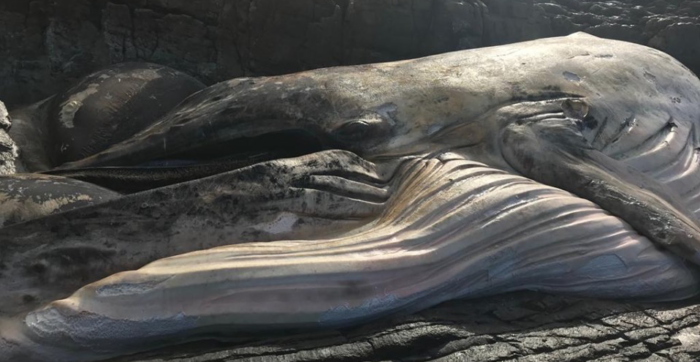On Tuesday, August 27, the Mammal Research Institute’s Whale Unit confirmed the stranding of a sub-adult humpback whale near the Palmiet River mouth. The unit was notified of a whale that was stranded in the area by a local surfer on Monday morning.
The research unit headed to the site yesterday to investigate, and found the whale lying in the intertidal zone. An intertidal zone is the area of the marine shoreline that is exposed to air at low tide, and covered with seawater when the tide is high. The whale measured a total length of 11.5-metres, and its skin had began to come off as decomposition had set in.

The team collected samples of skin, blubber and a barnacle that was attached to the whale’s body. The samples will be used for genetic analysis, among other things. The cause of death is undetermined, but there were no signs of entanglement and a full autopsy could not be completed due to the whale being partly submerged.
According to the Mammal Research Institute Whale Unit, the humpback whale population is probably at a maximum and they expect to see higher numbers of strandings this year.

Pictures: Gideon van den Berg/Meredith Thornton

